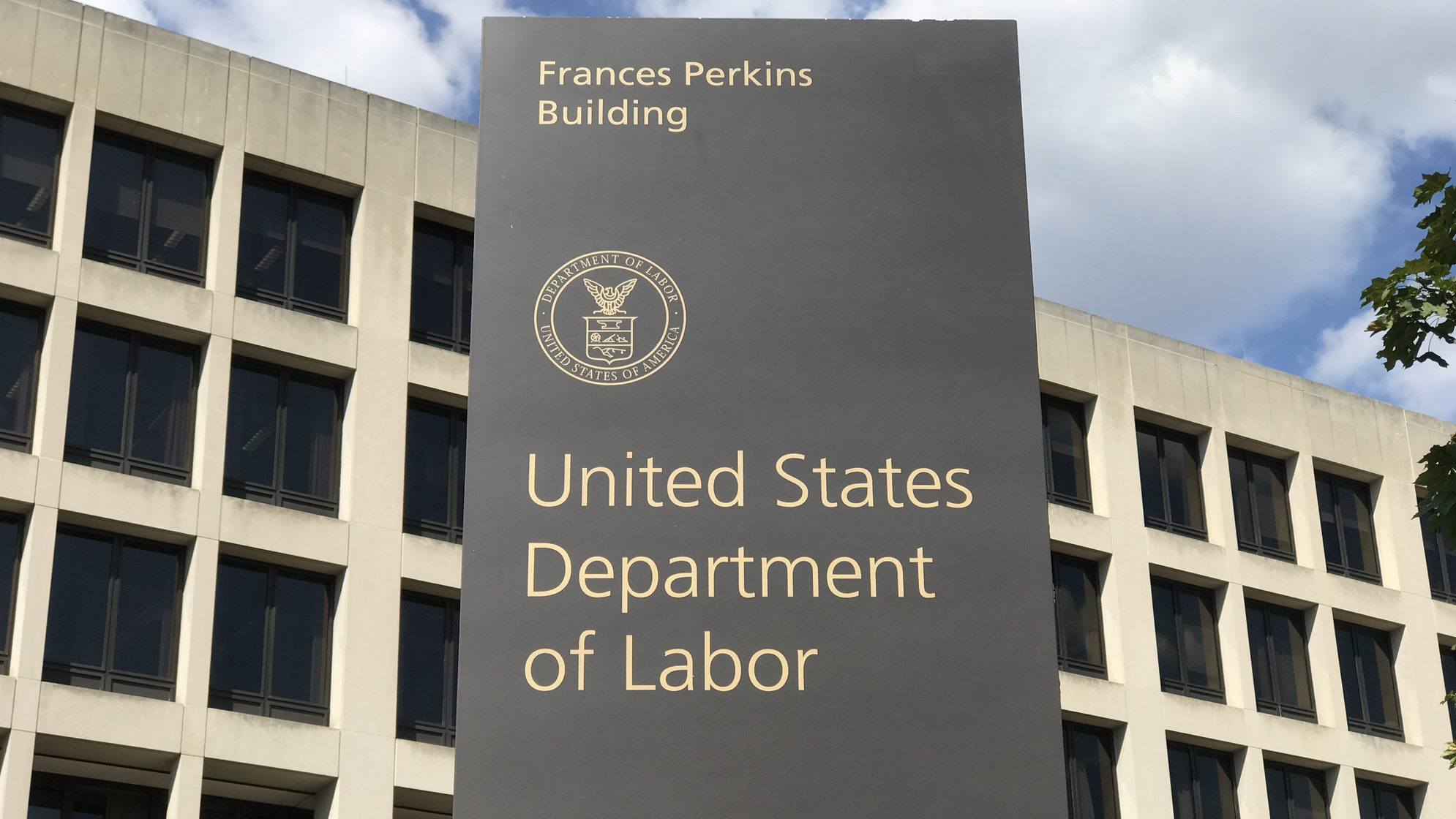DOL Issues Opinion Letter About Holidays During FMLA Leave
On May 30, 2023, the Wage and Hour Division (WHD) of the U.S. Department of Labor issued Opinion Letter FMLA2023-2-A: “Whether Holidays Count Against an Employee’s FMLA Leave Entitlement and Determination of the Amount of Leave Taken.”
The letter addresses whether an employee taking leave under the federal Family and Medical Leave Act (FMLA) during a week that includes a holiday uses leave equal to a fraction of their usual workweek or a fraction of a reduced workweek (the employee’s usual workweek less one day). The WHD advises that employees use a fraction of their usual, full workweek in this situation.
When Leave Is Taken for a Full Workweek
The FMLA entitles eligible employees of covered employers to take 12 weeks of unpaid leave for qualifying family and medical reasons. The letter notes that when a holiday falls during a week that an employee is taking a full workweek of FMLA leave, FMLA regulations specify that the entire week is counted as FMLA
leave.
DOWNLOAD THE ENTIRE PDF BELOW:
Tips for Managing During the Great Reshuffle
The Great Reshuffle—a mass movement of workers leaving jobs with which they are not satisfied—shows no signs of slowing down. As Generation Z and Millennials begin to make up more of the workforce, it has become clear that values and priorities have shifted from those of previous generations. Furthermore, unemployment rates are down, and the employment market is currently very worker-friendly. The combined effect of these factors is that employees more readily move between different jobs to find those that align with their priorities and desires. This often means seeking out better compensation or benefits, workplace flexibility, career development opportunities or the right culture fit.
The Great Reshuffle can make for a challenging environment for employers, but several tips can help mitigate the issues employers may face. Consider the following strategies:
Download the Entire PDF Below:
Total Compensation Statements and Today's Talent Challenges
Pay stubs typically show an employee’s salary, bonuses, taxes and other deductions, but many benefits employers provide employees may not appear. While some absent benefits may be obvious, others may be overlooked or are easily forgotten by employees. A total compensation statement provides employees with a broader understanding of what benefits their employer provides.
Organizations use total compensation statements to not only help employees understand their full compensation packages but also build loyalty and increase retention. After all, in the current labor market, employers need to do everything possible to bring in and keep employees. Utilizing total compensation statements may be one strategy to help employers address their attraction and retention challenges.
Download the Entire PDF Below:
Strategies for Avoiding Litigation Over COBRA Notices
Employers are seeing an increase in lawsuits from former employees alleging deficient Consolidated Omnibus Budget Reconciliation Act (COBRA) election notices. These lawsuits are generally class actions and can result in significant attorneys’ fee awards for successful ex-employees. Understanding current COBRA notice regulations and litigation trends can help employers stay compliant and avoid costly lawsuits.
What Is a COBRA Notice?
Most employer-sponsored group health plans must comply with the Employee Retirement Income Security Act (ERISA), which establishes standards for protecting employee benefits. One protection established by ERISA is an employee’s right to continued health insurance coverage under COBRA.
COBRA allows former employees and their families to continue their health insurance for a limited time after a qualifying event. Qualifying events include:
- Termination of employment
- Reduction of work hours for reasons other than misconduct
- Death
- Medicare eligibility
- Divorce
- A child’s loss of dependent status
Employers must provide former employees with notice that they may elect to continue their health coverage.
Download the Entire PDF Below:
Inflation Increases to 9.1% in June, Reaching a 40-year High
The Bureau of Labor Statistics announced that the U.S. consumer price index (CPI) rose 9.1% year over year in June 2022. This is the highest level since December 1981, surpassing last month’s record 8.6% reading and even economists’ predictions of an 8.8% CPI increase in June. Americans paid sharply higher prices for various goods in June as inflation kept its hold on the economy.
The increases were felt across all categories but notably impacted gasoline, shelter and food. Gasoline prices were up nearly 60% over the year in June; the American Automobile Association reported the national average at the pump was $5.01 per gallon. In general, energy prices rose (by 41.6% year over year). Electricity prices rose 13.7%, and natural gas prices increased 38.4% year over year in June.
Prices for food at home increased 12.2% over the year, significantly driven by cereals, dairy and meats. Food away from home trailed slightly behind at 7.7% in June.
Download the Entire PDF Below:
Employee Quits Continue Downward Trend in May from All-time High
The U.S. Bureau of Labor Statistics (BLS) recently released its May Job Openings and Labor Turnover Summary. The number of employee quits continued to fall for the second month in a row; May’s reported number of employee quits fell to around 4.3 million, down from 4.4 million in April and from a record high of 4.5 million in March.
Download the Entire PDF Below:
HR Brief Newsletter - July 2022
DOL Reminds Employers to Prioritize Safety for Summer Youth Hires
With summer being a popular season for youth employment, the U.S. Department of Labor (DOL) recently reminded employers hiring youth-aged workers to comply with federal child labor laws to ensure these hires have a safe and beneficial experience.
The DOL’s Fair Labor Standards Act (FLSA) prohibits employers from allowing youth-aged employees—workers who are under 18 years old—to perform certain tasks and work more than a specified number of hours. However, child labor laws can vary based on the industry and state. Failing to comply with the FLSA can result in significant consequences for employers.
Download the Entire PDF Below:
Combating Rising Benefits Costs During Periods of High Inflation
The U.S. inflation rate has increased by 8.3% over the last year, according to the Bureau of Labor Statistics (BLS). This has led to significant price increases across various consumer goods as well as employee benefits such as health insurance. In fact, one-third of U.S. employees have already seen an increase in their health costs in the last year, a survey conducted by the Employee Benefit Research Institute reported.
This increase in costs presents challenges for employers facing one of the most difficult hiring markets in recent memory. Luckily, there are some strategies employers can utilize to mitigate increasing benefits costs without shifting the burden to employees, thus remaining attractive to current and prospective employees.
Download the Entire PDF Below:
Benefits Breakdown Newsletter July 2022
Containing Costs of Chronic Health Conditions
Chronic conditions are health conditions that require ongoing management over an extended period of time. They are the leading drivers of the nation’s $4.1 trillion in annual health care costs. Thus, they are significant sources of financial stress for employers and employees alike. According to the Partnership to Fight Chronic Disease, employer health care coverage for an employee with a chronic condition is, on average, five times higher than coverage for those without a chronic disease. The most common chronic conditions affecting the workforce today include cancer, diabetes, obesity and heart disease.
Fortunately, employers can help combat chronic conditions; this could, in turn, reduce your health care costs and yield a healthier workforce. Consider the following strategies:
Focus on prevention by making preventive care affordable through medical benefits and encouraging the use of such critical care.
Be accommodating and offer arrangements (e.g., alternative worksites and flexible work options) to help make chronic care management and treatment more accessible.
Make it personal by identifying programs that offer targeted messaging and support to keep employees informed, engaged and motivated to make healthy choices or changes.
Consider programs that address the common causes of chronic conditions (e.g., tobacco usage, unhealthy diet and a lack of physical activity).
Ultimately, you’re uniquely positioned to influence and encourage employees to manage their conditions and develop healthy lifestyle habits. Following the COVID-19 pandemic, it’s critical to get regular health care back on track so your employees can better manage their conditions and improve outcomes. Reach out to learn more about chronic conditions and the workplace.
Download the Entire PDF Below:
Price Comparison Tool Required for 2023 Plan Years
Effective for plan years beginning on or after Jan. 1, 2023, group health plans and health insurance issuers must make an internet-based price comparison tool available to participants, beneficiaries and enrollees. This requirement comes from final rules regarding transparency in coverage (TiC Final Rules) that were issued by the Departments of Labor, Health and Human Services and the Treasury (Departments) in November 2020.
According to the Departments, this tool will provide consumers with real-time estimates of their cost-sharing liability from different providers for covered items and services, including prescription drugs, so they can shop and compare prices before receiving care.
Download the Entire PDF Below:










